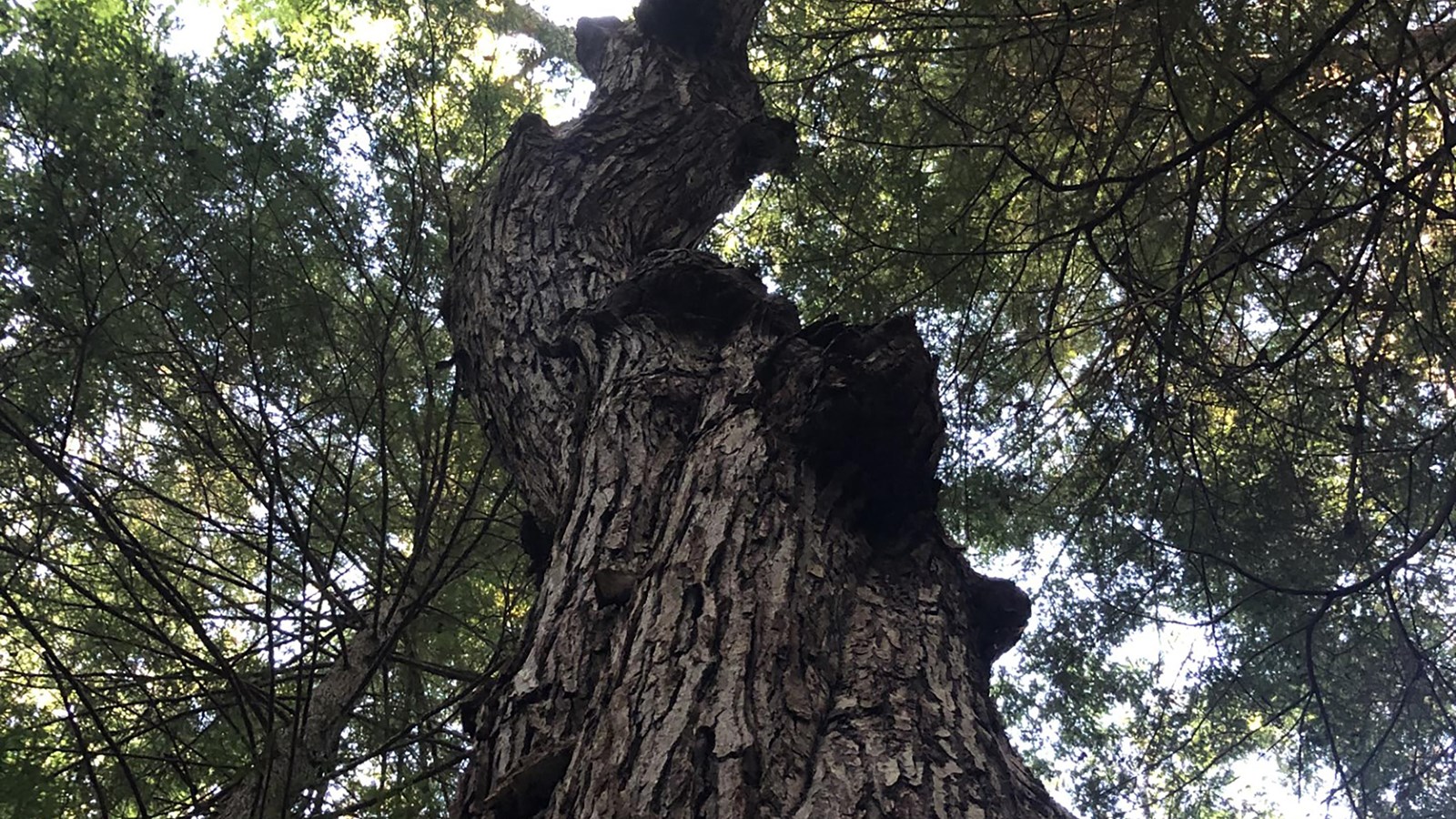Last updated: July 16, 2025
Place
Burnwood Trail Stop 5: Characteristics of Old Trees

Thomas Saladyga
Old-Growth Forest Hike Stop 5 - Characteristics of Old Trees
This large chestnut oak is over 160 years old and provides an example of some of the unique physical characteristics trees develop in older age. By looking around the entire trunk, you will notice some parts of the tree’s bark are thick-plated and blocky while some areas of bark are flat. Many older trees will have a mix of balding and protruding bark patterns up and down the entire trunk. Bark on old trees can also be strikingly different in appearance compared to younger trees of the same species. Old trees also have very little stem taper, with minimal change in diameter from the base of the tree to the top near the crown.
Perhaps the best clue to determine if a tree is old lies within the branches and the crown. Lower branches are absent, indicating the tree grew in a closed-canopy forest where lower branches wouldn’t be useful to capture sunlight. Older trees usually have only a few large diameter branches that are high up into the crown, resembling a stalk of celery that only has leaves at the top of the tall stem. The upper branches are twisted and gnarled from decades of withstanding harsh winds and continuously reaching through the canopy attempting to capture available sunlight.
